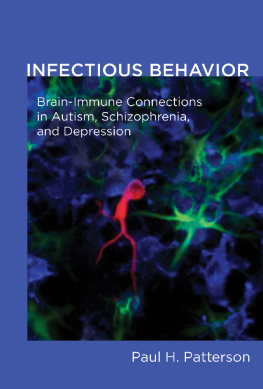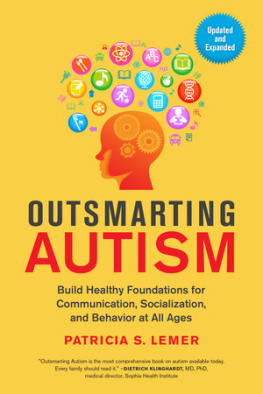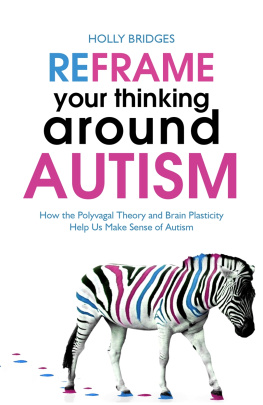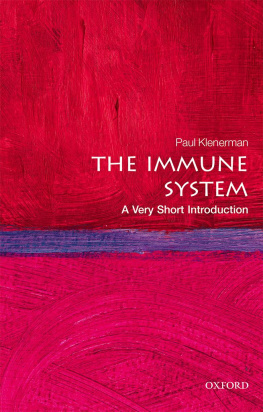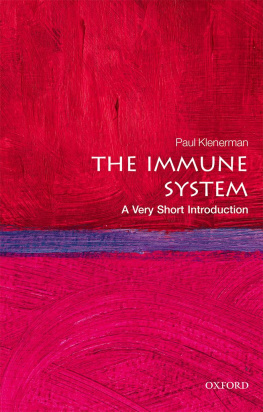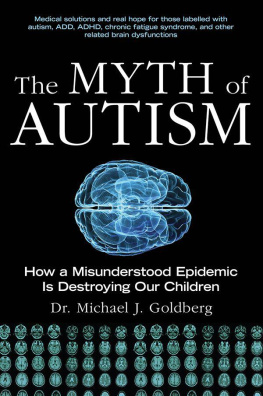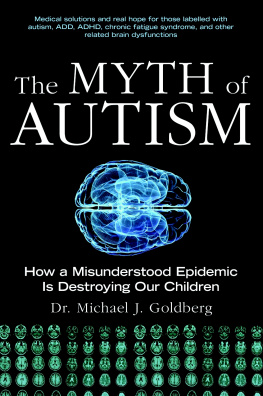Infectious Behavior
Infectious Behavior
Brain-Immune Connections in Autism, Schizophrenia, and Depression
Paul H. Patterson
The MIT Press
Cambridge, Massachusetts
London, England
2011 Massachusetts Institute of Technology
All rights reserved. No part of this book may be reproduced in any form by any electronic or mechanical means (including photocopying, recording, or information storage and retrieval) without permission in writing from the publisher.
For information about special quantity discounts, please e-mail .
This book was set in Stone Sans and Stone Serif by Toppan Best-set Premedia Limited. Printed and bound in the United States of America.]
Library of Congress Cataloging-in-Publication Data
Patterson, Paul H.
Infectious behavior : brain-immune connections in autism, schizophrenia, and depression / Paul H. Patterson.
p. cm.
Includes bibliographical references and index.
ISBN 978-0-262-01645-2 (hardcover : alk. paper)
ISBN 978-0-262-29767-7 (retail e-book)
1. Mental illnessImmunological aspects. 2. Psychology, Pathological. I. Title.
[DNLM: 1. Mental Disordersimmunology. 2. Brainembryology. 3. Brainimmunology. 4. Immune Systemphysiopathology. 5. Maternal-Fetal Exchange. WM 100]
RC454.4.P38 2011
616.89'071dc22
2011006509
10 9 8 7 6 5 4 3 2 1
To Carolyn and Paul Clair for their inspiration and patience
Acknowledgments
I am delighted to have the opportunity to thank my wife, Carolyn, for her careful and thoughtful editorial comments on this material. Elaine Hsiao produced the informative and attractive original illustrations, and Laura Rodriguez provided excellent editorial assistance. Ali Khoshnan, Suzanne York, and River Malcolm made useful comments on early versions of several chapters. Alan Brown, Carlos Pardo, and David Barker made time for extended conversations about their areas of considerable expertise. Alan has also provided numerous mini-tutorials in epidemiology over the years, and we collaborated recently on the new book The Origins of Schizophrenia, published by Columbia University Press. I also wish to thank the members of my laboratory at Caltech, who have produced much useful data over the years on neuroimmune interactions and on the maternal infection risk factor. Several faculty colleagues and collaborators, past and present, have also contributed materially and intellectually to the story presented here.
Introduction
This book is intended for those in the general public who are interested in new advances in our understanding of how the brain works, as well as those who have a particular interest in autism, schizophrenia, or depression. One novel aspect of the book is its focus on the bidirectional cross talk between the brain and the immune system. These neuroimmune interactions are described as they occur in healthy people as well as in those with mental disorders. Another theme that runs through the book involves the interactions between the mother and her fetus. This is an important topic because maternal-fetal interactions are essential for the development of normal behavior in the offspring, and they are critical in the development of the behaviors and neuropathology that we call mental illness. The roles of immune cells and immune-related molecules are illuminated by way of information gleaned from a wide variety of animal and human studies.
I arrived at this book from several directions. First, my laboratorys research accidentally veered into the interactions between the nervous and immune systems. For many years, we had worked on characterizing a protein that had the amazing ability to change the fate of developing neurons. That is, when the protein was added to those neurons, in cultures with cardiac muscle cells, the neurons went from being excitatory (speeding up the heartbeat) to inhibitory (slowing it down). When we obtained the sequence of the gene that codes for this interesting protein, we found its sequence to be identical to one recently obtained for a protein that had important effects on cells of the immune system. That the same protein could operate in both the nervous and immune systems suggested that it could mediate cross talk between the two systems. In fact, subsequent work has shown that this protein is indeed important in mediating inflammatory reactions within the brain. This line of investigation led our laboratory into the field of what came to be known as neuroimmune interaction. It also helped lead to the identification of an entire family of similar proteins that can mediate neuroimmune functions.
The second impetus for this book arose from lectures on mental illness that I gave while on the faculty at Harvard Medical School and later at the California Institute of Technology. I became particularly interested in schizophrenia, a complex but fascinating disorder, and was disappointed in the animal models that were available at the time. Knowing how effective the use of truly appropriate animal models can be in studies of disease, our laboratory set out to see if we could make a contribution in this area. Because work with animal models of mental illness was seen by some as soft science, and known as an extremely difficult area in which to make rapid progress, some of my colleagues attempted to discourage me from starting such a project. Nonetheless, I shared the opinion of a former president of the Society for Neuroscience, Huda Akil of the University of Michigan, that studying the neurobiology of mental illness is not a luxury that neuroscientists can engage in after they have handled more accessible problems. And I firmly believe, as do the writers of a recent editorial in the journal Nature, that there are many ways in which the understanding and treatment of conditions such as schizophrenia are ripe for a revolution. In fact, such a revolution is currently under way. This is readily apparent from some of the new findings summarized in this book.
The key point of entry for me was reading about the epidemiology work investigating possible causes of schizophrenia. The fact that many studies pointed to infections in pregnant women as a risk factor for schizophrenia in the offspring suggested a straightforward experiment in mice: could maternal infection lead to offspring with features of mental illness? The parallel question was, of course, could features of mental illness be observed in mice? We proceeded to show that the behaviors of the offspring of infected pregnant mice were consistent with some of the behaviors seen in schizophrenia, and this launched our laboratory into the study of how maternal infection influences fetal brain development. In this roundabout way, a second part of our group came to be working on neuroimmune interactions.
A third motive for this book came from the work of many investigators who are uncovering evidence of immune involvement in schizophrenia, major depressive disorder, and autism. I believe that such work is not yet fully appreciated by the biomedical community, overshadowed as it is, in both publicity and funding, by genetic approaches to these diseases. Moreover, my experience in giving lectures for the general public has shown me that even laypersons with an active interest in biomedical science are generally unaware of the important connections between the mind and the immune system, and of the role in mental illness played by the immune-related molecules and cells described here. The book is intended for those readers.
My enthusiasm for this research, and for the book, was further propelled by an autism diagnosis in our nephew and by the compelling work of my wife, Carolyn Patterson, who very effectively teaches children with special needs, including many with autism.
In this short book I have chosen to combine these various threads in the following manner. Chapter 1, Fever and Madness, brings a historical perspective to immune manipulations in the treatment of mental illness, highlighting the frightening but fascinating experiments from the early days of the study of the mind-body connection. Chapter 2, Brain-Immune Connections, Stress, and Depression, describes how the immune system influences behavior and how the brain regulates the immune system. The ways in which this bidirectional cross talk influences stress and major depressive disorder are considered, and some of the molecules involved are introduced. Emphasis is given to findings that neuroimmune interactions operate both when people and animals are healthy and during periods of disease or injury.
Next page
